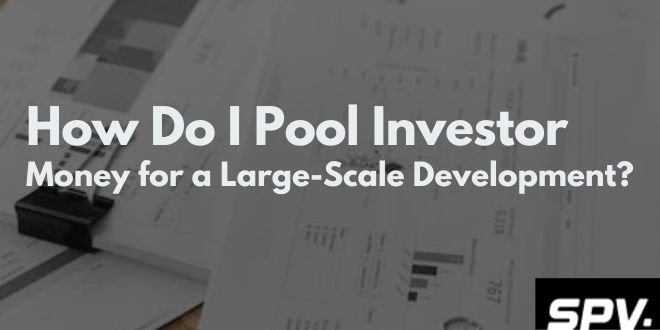-
November 26, 2025

Pooling capital for an ambitious real-estate or infrastructure project is a thrilling milestone—and a logistical maze. Throughout the process you’ll hear advisers, attorneys, and even fellow developers talk about Special Purpose Vehicles (SPVs) as though they were secret passageways to easy funding. In truth, an SPV is only one tool in a toolkit that also includes meticulous planning, regulatory awareness, and old-fashioned relationship building.
The following guide breaks down the major steps—strategic, financial, and legal—that go into assembling a cohesive investment pool for a large-scale development. Use it as a roadmap, adapt it to your market, and remember that clarity and consistency are your greatest allies.
Pooling Investor Capital: From Idea to Closing
Before you ask anyone for a cent, document exactly what you’re building, why it will make money, and how long that money will be tied up. Investors want to see:
Treat this as more than a spreadsheet exercise. A clear narrative—one that explains why the market needs your development now—often turns skeptical listeners into enthusiastic partners.
An SPV is a separate legal entity created specifically to hold and manage a single investment. By corralling every dollar of investor equity inside one entity, you simplify ownership records and limit liability.
Key advantages of using an SPV to pool funds:
Potential drawbacks:
Pooling money triggers securities laws—federal, state, and sometimes international. Failure to comply can undo years of effort.
Always involve a securities attorney early. The right counsel costs money, but regulatory mistakes cost far more in fines, rescissions, and reputational damage.
Capital rarely lands in one phone call. It trickles in through cultivated relationships.
Remember that confidence breeds confidence. If your first group of investors senses momentum—say, 40% of equity is already subscribed—they are more likely to close quickly.
Verbal enthusiasm is not capital. Move investors through these stages:
Maintain a secure, cloud-based data room so investors can review construction budgets, third-party reports, and quarterly draw schedules without endless email threads.
Your duty to investors doesn’t end when the bank balance spikes.
Transparent, proactive management is the single best way to convert one-time investors into lifelong partners for your next development.

Get Latest News and Updates From VID.co! Enter Your Email Address Below.
Our team is here to guide you through every step, whether you’re launching a real estate SPV or need a tailored white label solution. Contact us today for a personalized consultation and find out how SPV.co can streamline your investment management.